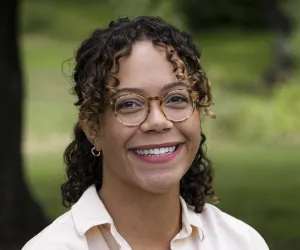Q&A with a college and career counselor on affirmative action and changes to federal aid
This article by Aketzally Murillo was published in the Minnesota Reformer on March 11, 2024.
Last year the Supreme Court struck down race-conscious affirmative action in college admissions programs, declaring race cannot be a factor and forcing institutions of higher education to look for new ways to achieve diverse student bodies.
The end of affirmative action was one of many changes affecting Minnesota’s college-bound students this year. In 2022, Congress passed legislation changing the Free Application for Federal Student Aid to simplify the process and expand the amount of aid available.
The rollout of the new FAFSA form has been troubled and delayed, throwing off university admissions timelines.
The federal government says the changes will help more students access federal aid, and that parents can create an online FAFSA account even if they don’t have a Social Security number, though a glitch in the application created additional delays for parents without an SSN.
The criteria for independent students — those who can apply for financial aid without parents’ or guardians’ income information — also expanded.
Students nationwide will receive more financial aid. In Minnesota, an estimated 13,000 additional students will receive a Pell Grant, a 12.5% increase from 2022.
New Minnesota scholarship programs are also taking effect this admissions cycle.
The North Star Promise Scholarship program, which was passed by the DFL-controlled Legislature in 2023, will provide free in-state college tuition to students whose families make less than $80,000 per year by covering the balance of tuition after other scholarships, grants, stipends and tuition waivers have been applied.
To help sift through all this new information, the Reformer talked to Zoey Haines, a program manager at Achieve Twin Cities, which provides college and career services to high schools. She has also worked in higher education admissions.
This interview has been edited for length and clarity.
How has the end of affirmative action impacted the way students are approaching the application process?
The vast majority of colleges are actually not that selective, and aren’t really using race as a factor when they’re admitting students. Where it really came into play is at highly selective institutions where they’re doing a holistic review, looking at all of the different pieces of a student’s identity and experience and how that might have shaped them into the student that they are.
There’s all this additional uncertainty about the college admissions process … and so many students already felt like they didn’t belong. This compounds and adds another barrier to that process.
What are some of the ways schools have gone around this new rule to inquire about a student’s racial identity?
What a lot of schools have done is add or change existing questions that are more focused on barriers that a student might have faced. Students can write about their racial identity, it’s just that colleges have to consider it in a narrow way. It has to be something that has impacted the student’s life. (College applicants) have to clearly talk about how their racial identity has shaped them into the person they are today, how it’s impacting what they’re bringing to the campus community, and things like that. The admission decision can’t weigh on a student’s race, so they’re going with these other questions that are broader.
Who is this benefiting?
There still is “affirmative action” that benefits majority white students like legacy admissions, athletics and wealth. My guess is (the end of affirmative action) will widen the gap, and it creates fewer avenues for students of color to at least feel like they can apply, or feel like they belong, or feel like these institutions want them there.
How have changes to the FAFSA form impacted students, especially those with immigrant parents?
One thing is now parents who do not have Social Security numbers are counted as contributors (the FAFSA term for parents and and can create an (online account) for themselves. Their information will be pulled in from the IRS directly into the FAFSA.
The bigger changes have to do with the importing — automatic and required import from the IRS into the FAFSA. That made the whole process theoretically much faster for most families. But the delays in implementation have just added another barrier to the college process this year.
How has the process changed for independents, e.g., students without parental financial support?
Previously, they had a variety of different categories that would make a student independent so they wouldn’t have to provide parent information.
They added parental estrangement, so if you’re not in contact with your parents, or if it would be harmful for you to contact your parents, they added other categories that I consider to be a little more broad, and a little bit more student-centered. So if a student isn’t fitting into one of those specific categories … you still have an option to fill out your FAFSA as an independent student. It’s easier for independent students, and that student…can get a little bit further into the process as a student than they could before.
Aketzally Murillo is a high school student in Minneapolis. She is a participant in ThreeSixty Journalism's mentorship program, which pairs student reporters with professional journalists in the Twin Cities. Read this story on the Minnesota Reformer website.
